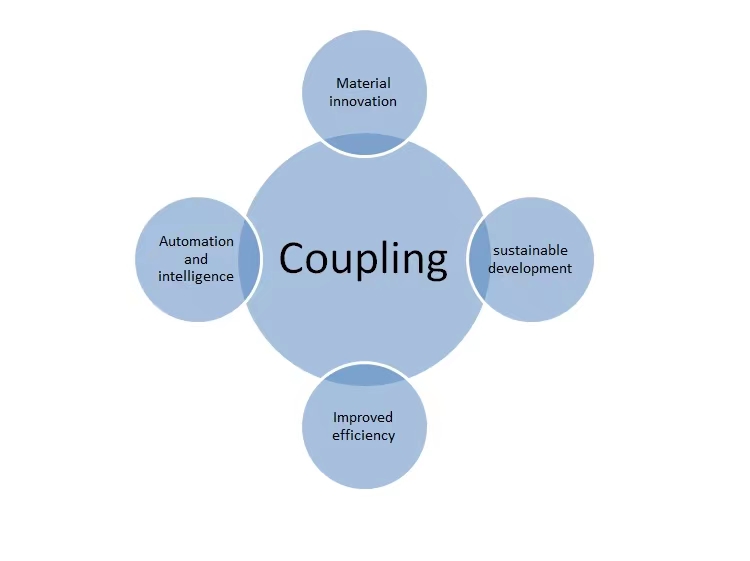
Development Trend of Couplings
2024-01-12 09:34A coupling is a mechanical device used to connect and transmit torque. With the continuous development of science and technology, couplings are constantly innovating and improving. Let’s discuss the development trends of couplings.
1. Innovation in manufacturing materials
With the continuous advancement of material technology, new materials such as carbon fiber reinforced plastic (CFRP) and composite materials are widely used in the manufacturing of couplings. These materials have higher strength and wear resistance, which can improve the service life and transmission efficiency of the coupling.
2. Higher level of intelligence and automation
With the development of Industry 4.0, couplings are also developing in the direction of intelligence and automation. By implanting sensors and advanced control systems, couplings can achieve more precise transmission control, monitor operating status in real time, and perform automatic alarm and protection operations in the event of failure.
3. Higher carrying capacity and transmission efficiency
Future couplings will focus more on improving load-bearing capacity and transmission efficiency to meet the needs of various complex industrial equipment. New design and manufacturing processes will enable the coupling to withstand greater torque and load, improving energy efficiency while maintaining stable operation.
4. Green environmental protection and sustainable development
The rapid development of electric vehicles, wind power and other renewable energy fields has put forward higher environmental protection and sustainable development requirements for couplings. Future couplings will pay more attention to reducing energy consumption, reducing emissions and extending service life to achieve higher environmental benefits.
In general, as an important mechanical transmission device, the development trend of couplings mainly focuses on materials, intelligence, load-bearing capacity and environmental protection. With the continuous advancement of technology, I believe that couplings will develop more advanced and efficient products in the future, making greater contributions to the development of industrial production and energy fields.

